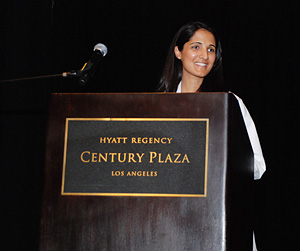- Question: How do the ingredients in e-cigarettes and vaporizers affect respiratory health? - August 16, 2019
- Bad Technique and Vocal Injury - January 9, 2019
- Is Edible Marijuana Dangerous for the Voice? Myths Dispelled - December 18, 2018
- Surprise! You have a hemorrhage - January 31, 2018
- Graves’ Disease: Treatment Overview - September 25, 2017
- Adele and the Stigma of Vocal Injury - July 11, 2017
- Vocal Curbside Consult: How does the thyroid affect the voice? - May 16, 2017
- Vocal Curbside Consult: How do hormones affect the voice? - May 3, 2017
- Vocal Curbside Consult: How do emotion and stress affect the voice? - April 17, 2017
- Vocal Curbside Consult: Vocal Recovery After Illness - April 7, 2017
 The topic of vocal fry in young women is important and it does not seem to be going away. Regularly, a study concludes that speaking in vocal fry affects a woman’s authoritativeness or makes her less likely to get a job. When Google released their plug-In “Just Not Sorry,” this topic was pushed to the forefront again. This is the latest indication that women are making a more conscious assessment of their own role in their success.
The topic of vocal fry in young women is important and it does not seem to be going away. Regularly, a study concludes that speaking in vocal fry affects a woman’s authoritativeness or makes her less likely to get a job. When Google released their plug-In “Just Not Sorry,” this topic was pushed to the forefront again. This is the latest indication that women are making a more conscious assessment of their own role in their success.
The plug-in, which highlights “sorry” and other “undermining” words, seeks to help women to observe ways in which they may be losing credibility without realizing. Vocal fry is the pattern of speaking where the voice dips low and sputters, particularly at the end of a sentence. This is another cited example of undermining behavior. Whether it is or not, it is clear that for some people, those who speak in vocal fry are considered less intelligent, mature, or educated. If that person is a potential future employer, this matters.
 However, the larger question still remains: Is vocal fry really such a big deal?
However, the larger question still remains: Is vocal fry really such a big deal?
For every person who sneers at a young woman who uses fry, there is likely another who relates to her and finds her more hirable. Future employability aside, is there a reason we should worry about using vocal fry? Can the use of vocal fry affect your vocal health?
The short answer is: yes.
Try to think of one person who you know uses vocal fry. Chances are that you are thinking about a television or music personality. It is also likely that you are thinking of a young woman, probably in her late-teens or early-20s. That is the problem. The industry in which this vocally harmful behavior is most accepted (entertainment) is that where the voice is most important. If these women are injuring themselves when speaking in vocal fry, they are possibly limiting themselves in their music and acting careers.
Vocal fry is the lowest register of voice use. In order to produce vocal fry, the muscles of your larynx (voice box) must be placed in a very specific configuration. This configuration is ideal for vocal fry production, but not much else. Indeed, over time, repetitively slipping into this pattern makes coming out of it harder.
If you are a singer who is constantly trying to work their muscles to belt, which requires a different muscular configuration, then developing the vocal fry muscular pattern is completely counterproductive. It can limit the range of the belt or mix voice because the muscles are unable to disengage the vocal fry muscle pattern. This often results in the need for advanced muscular techniques, such as Laryngeal Myofascial Adjustment or extensive retraining.
The same is true for any professional endeavor that uses the body. If a basketball player spends months shooting with the wrong stance, that muscular habit becomes very hard to break and often requires a trainer to do so.
A singer may not realize that they are being limited by muscular misuse patterns, and may simply think she is unable to belt high. An actress whose voice cracks when she is trying to emote may think that this is simply how her voice is. Inappropriate muscular engagement may produce both of these scenarios, and this is often a product of vocal fry and other speaking technique issues.
While vocal fry may also directly produce vocal cord damage, the more likely outcome is a muscular issue, which can produce vocal fatigue, pain, and limited vocal range. For those whose voices are their career, this will be limiting in ways far beyond how a future employer may perceive them in a job interview. It’s their art and their livelihood at risk.



